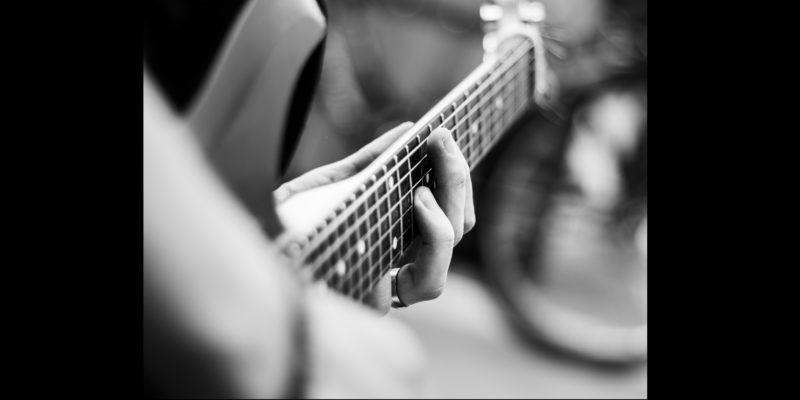Guitar is one of the most enjoyable hobbies in the world. It’s also one of the most challenging – especially in the early days when you’re learning to train your fingers to do things they weren’t really designed to do.
It takes a lot of time and effort.
Fortunately, there are a lot of beginner chords to get you started. For most newbies:
- G major, C major, A major, and D major aren’t too bad.
- E minor, D minor, and A minor are also relatively easy.
But sooner or later, you’ll start running into harder chords like F major – specifically the barre version.
In fact, the F chord is the #1 exit ramp for most struggling guitarists. Frustrated by their inability to master the barre chord, many beginners quit playing altogether. And that’s a shame given how rewarding the guitar can actually be.
Others simply avoid songs that use F major. But this strategy is very limiting since:
- F appears in a lot of music. And without learning this chord, your repertoire will only grow so large.
- Learning your first barre chord unlocks a lot of real estate on the fretboard. You can play up and down the neck – experimenting with different sounds, positions, and styles.
Utilizing resources like top midi packs from Unison Audio can enhance this exploration, offering a variety of musical styles and chord progressions that can accelerate your learning and creativity on the guitar.
So before you give up learning guitar for some easier hobby, here’s an intuitive practice technique that can help make the F barre chord a little less intimidating.
The Batch Method for Practicing the F Barre Chord
Guitar teachers often use batches of “similar” songs to help their students tackle difficult concepts from multiple angles.
And that’s what we’re about to do here.
We’ll use the “Batch Method” to make learning F chord on guitar less daunting.
Here’s how the process works.
Step 1: Start with a target song that uses easy beginner chords and F major. For example purposes, we’ll use this unofficial version of Sweet Caroline.
In addition to F, this song also uses C, G, Am, Em, and Dm.
Step 2: Find other songs that use the exact same chords. You can do that easily with this free search engine.
For example, a search of G, C, Am, Em, and F reveals nearly 400 tunes that use those chords exclusively.
Step 3: Pick 5 to 10 songs from the list. If you wanted to practice tunes similar to Sweet Caroline, for example, you might choose songs like:
- And I Love Her by the Beatles
- You’re So Vain by Carly Simon
- This Magic Moment by Jay and the Americans
- See See Rider by the Animals
- Bad Moon Rising by Creedence Clearwater Revival
- Mona by the Rolling Stones
What all of these songs have in common is that they use F major plus some exclusive combination of our other chords – C, G, Am, Em, and Dm.
Step 4: Cycle through your song list – practicing a different tune every session. It doesn’t really matter what song you’re working on at any given moment. Every single title on the list is a practice opportunity for learning F major.
- Some songs (like And I Love Her) use all of our original chords.
- Other tunes (like Bad Moon Rising) only use 3 chords – C, G, and F.
- And there’s at least 1 song (Mona) that only uses 1 chord – F.
If you ever get frustrated or need a break, simply skip to the next song on your list. You have 5 to 10 tunes to choose from. And this variety helps reduce some of the boredom that comes when you’re only working on a single song for days, weeks, or months at a time.
Better still, this approach ensures that you get as much practice as possible moving between F and all the other chords that you already know. The more transitions you practice, the more confident you’ll become at the F barre.
And once you finally master this chord, you also pick up 5 or 10 songs along the way. That’s a pretty decent return on investment.
Conclusion
If you ever get stuck learning how to play the F barre chord (or any guitar chord for that matter), give the Batch Method a try.
This approach doesn’t automatically make barre chords easier. But when done correctly, the Batch Method:
- Maximizes your F chord exposure.
- Minimizes repetition and boredom.
- Helps you play with greater confidence.
- Expands your repertoire very quickly.
The learning process still takes time. But you’ll be amazed at how much progress you can make with this powerful practice method.
Best of luck. And happy strumming.
* * *
Article written by The Chord Genome Project.
The Chord Genome Project is a free search engine that helps you find songs based on the chords they use. Just type in the guitar chords you already know, and it’ll spit out a list of tunes you can start playing right away.

